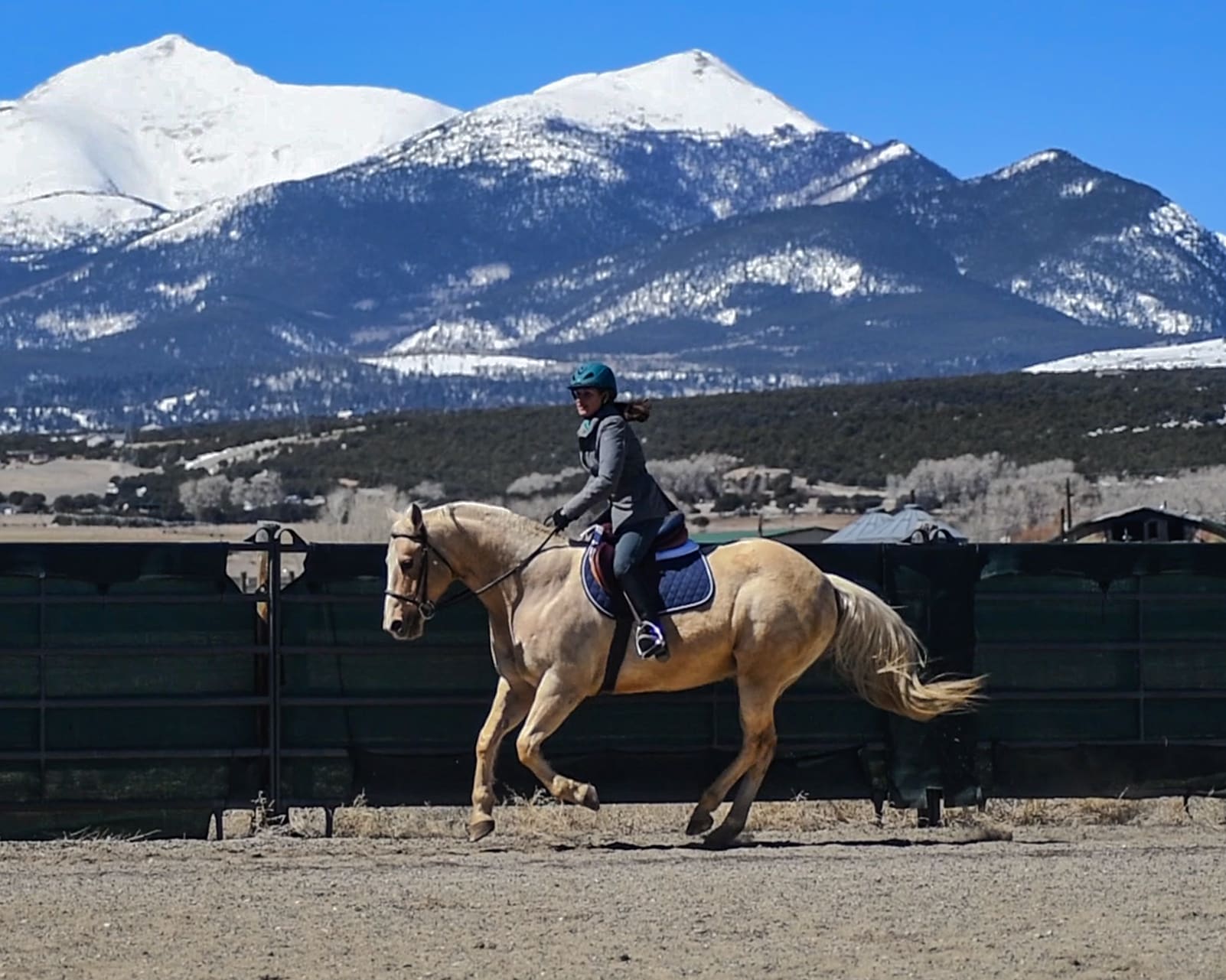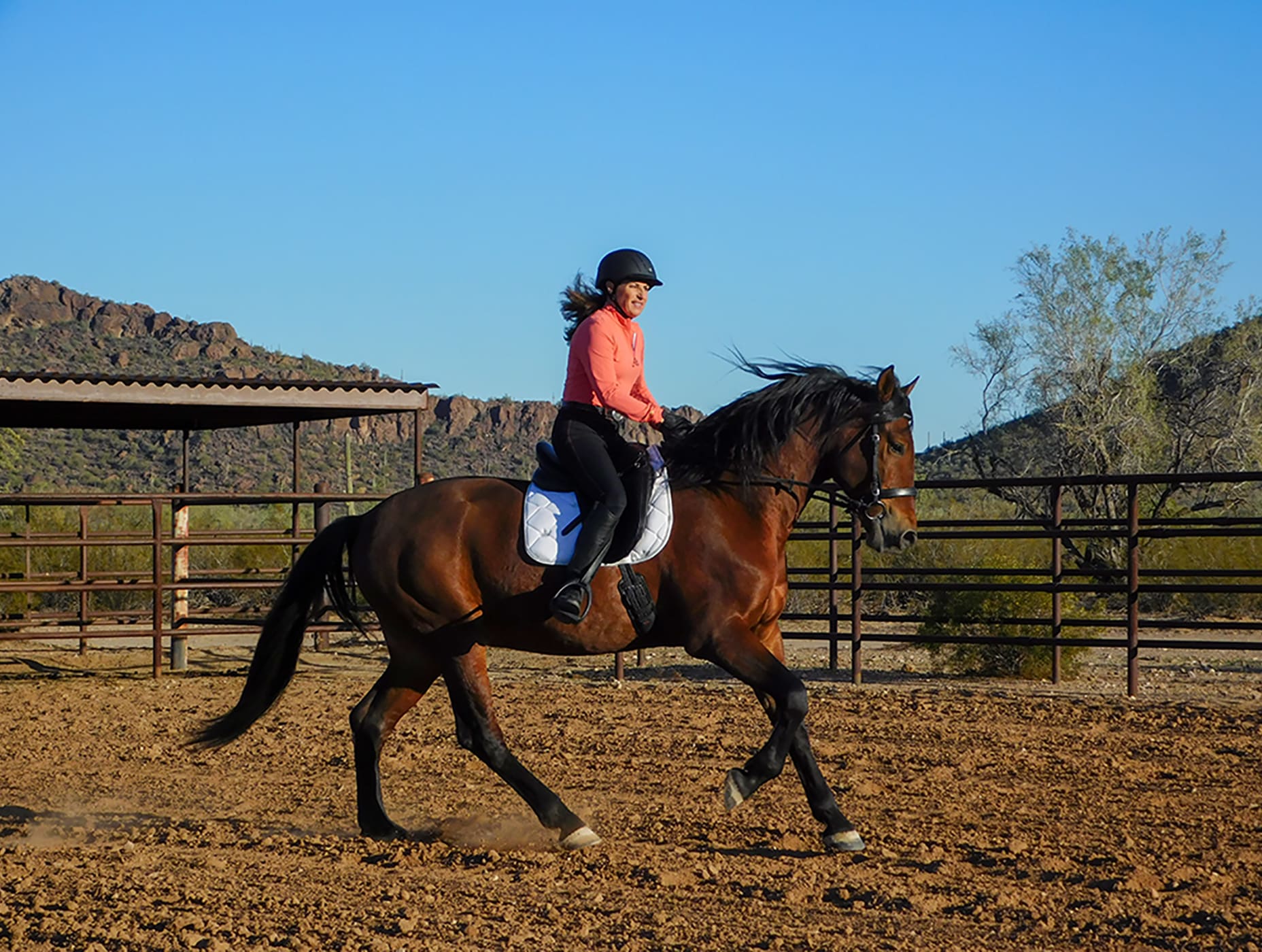…Can be a bad thing. Take for instance garlic. It is my favorite ingredient—I am likely to order an entrée at a restaurant based solely on this one ingredient. I put it in almost everything I cook. But I have learned, through bad experiences, that there is such a thing as too much garlic (much to my husband’s dismay). And this is true of horse training techniques as well. Have you ever seen a rider that went over-board, doing the same thing over and over with questionable results?
Perfect case in point is the horse on this week’s episode of Horse Master. It features a horse that is agitated, frustrated and anxious when being ridden and once I got on her, I realized right away that she had been over-flexed laterally to the point where she thought flinging her nose to my knee was that answer to every question I asked. You could not make any correction with a rein without her turning her head to the side and flexing her neck.
This is not the first time I’ve seen this phenomenon—I see it all the time at clinics and have had several horse in training that were confused by this and similar NH techniques. Lateral flexing has been so over-emphasized by some trainers that many horses do it automatically—without thought or sometimes without even a cue. I can always tell when I get on a horse if this is a problem when the horse starts flexing from side to side and I haven’t even picked up the reins yet. If every time you sit on a horse you ask him to flex laterally, it becomes an automatic response associated with you getting on—not a thinking response to your aids. Have you ever seen this?
The problem with the horse on this week’s episode of Horse Master -was that you basically could not steer her and could not go straight because any time you picked up a rein she’d turn in a tiny circle. Anyone who has trained young horses knows that one of the most difficult things to teach them is to go straight. Controlling the horse’s speed was next to impossible as well for the same reason. It didn’t take too long for me to straighten the horse out (pun intended) and eliminate the mare’s confusion but it actually was one of the main sources of the rider’s (and horse’s) frustration.
Lateral flexion is good and, in fact I am an advocate of it both person, in clinics and demos, and on my video “Bit Basics”. Lateral flexion teaches the horse to give softly to the side with a touch of one rein and is the precursor to vertical flexion, when the horse brings his nose in and down in response to pressure from two reins (as needed for collection and “framing” a horse). But too much of a good thing is a bad thing and, as with many things in horse training, you can over train and end up with a horse that is “over-faced” or over-reactive or anxious.
Actually, the horse featured in this week’s episode of Horse Master responded really well once the rider understood the problem and changed her riding (and after we switched her to a more appropriate bit—Myler of course!). Believe it or not, we are all horse trainers—every time you ride a horse you are either training it or untraining it. Hopefully the former but sometimes you need to think through what you are doing!
Enjoy the ride,
Julie
Join Julie’s Library Membership to access all of the Horse Master Episodes HERE


